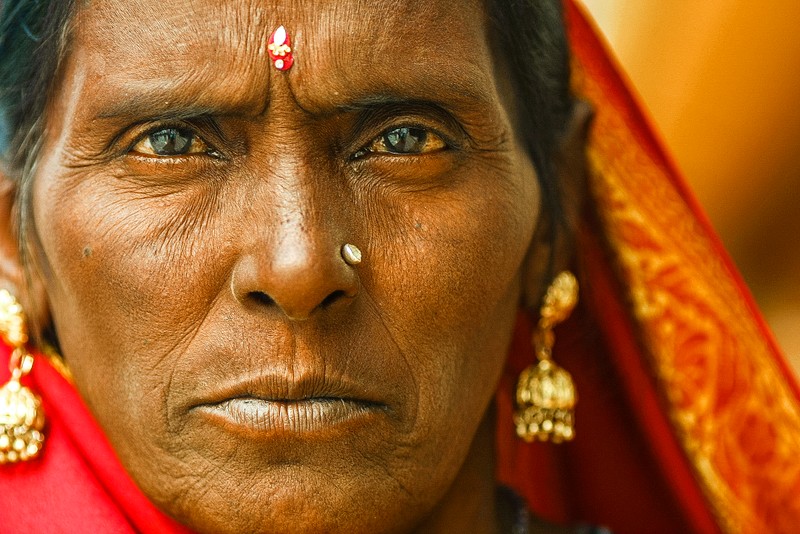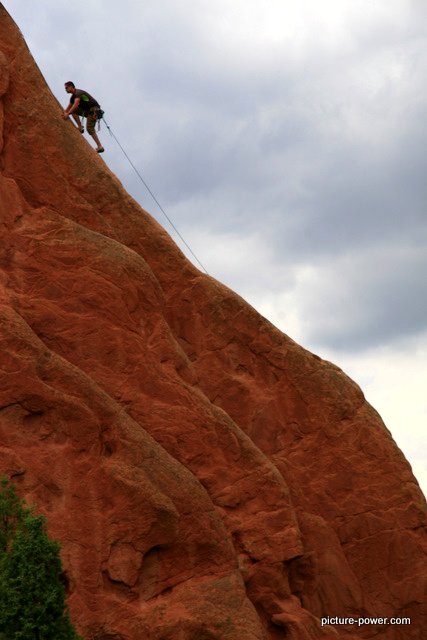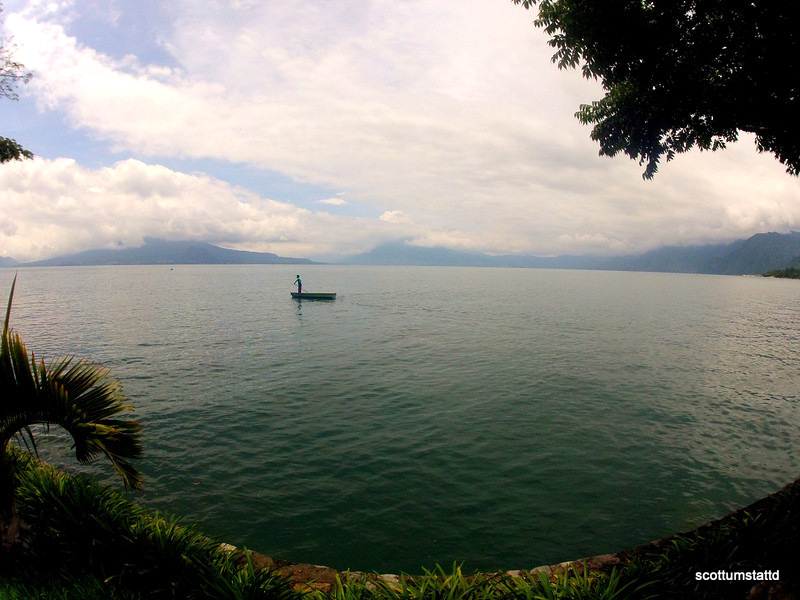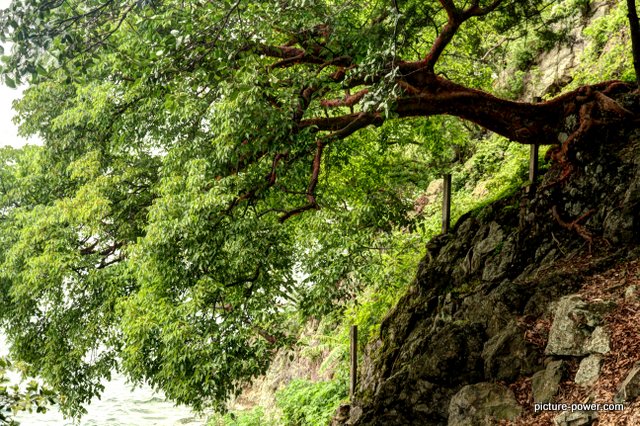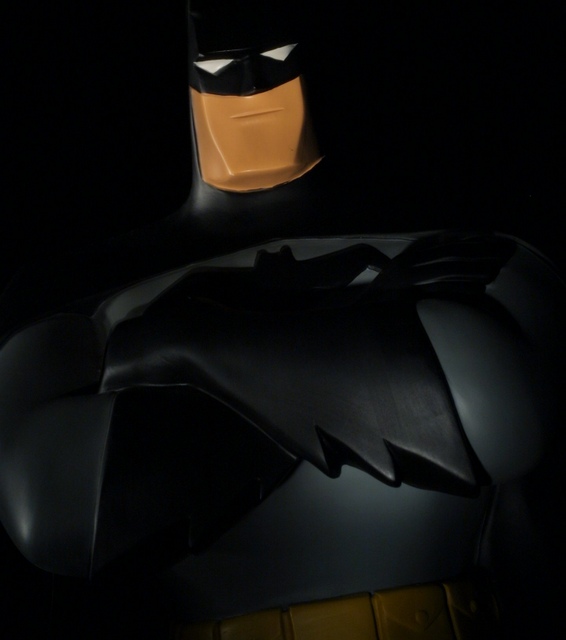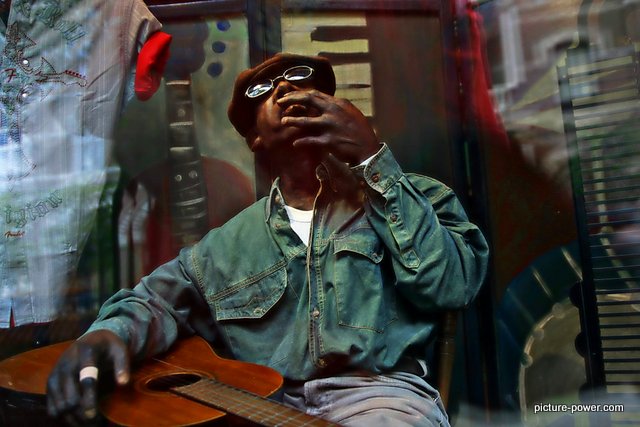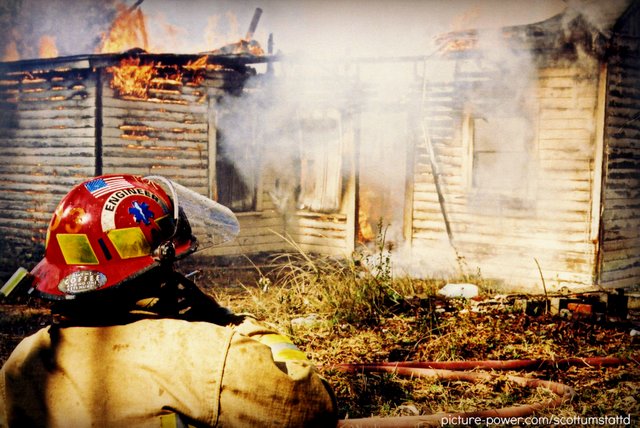What Makes A Picture Powerful?
By Scott Umstattd
What makes a picture powerful? It's a loaded question, to be sure, because there is not an answer to this question that will appeal to everyone.
There is not an answer to this question that science and data can determine for us.
In the end, what makes a picture powerful lies completely in the eyes of the beholder. It is subjective, not objective. It is personal, based almost entirely on the experience of the viewer.
A powerful picture cannot be broken down to its individual elements alone. In some ways it's religion, not science. It's based on your interpretation of what you see. Not the data.
A powerful picture can be moving, it can evoke emotion and it break every rule of photography. A picture that follows every rule does not guarantee an emotional response.
Is the picture above powerful? Did you cry or laugh or gasp when you saw it?
Probably not. But for me this is a powerful picture. And it's not just because I took this picture.
Notice the logo on the tail of the plane? It's the logo for Habitat for Humanity. Habitat is loved my millions of people. If you have ever volunteered with Habitat, maybe, upon noticing the logo, you got a little excited.
There is nothing special about this picture. It's a picture of a plane taken from a terminal at an airport. I'm willing to bet a lot of you have mindlessly taken a picture like this before while waiting for your plane to arrive.
For me, this is a very powerful picture for several reasons. One, I used to work for Habitat for Humanity and I worked with Delta when they offered Habitat a chance to appear on this particular airplane. I know what it took to get our logo on that plane. Dozens, probably hundreds of emails. Conference calls. And several high-level hand-shakes.
It's particularly powerful for me because I had the chance to see this plane the first time it rolled out of its hanger in Atlanta, Ga. I literally kicked the tires of this plane. Jon Bon Jovi was there to help announce this addition to Delta's Global Force for Good. I walked into the cockpit of this plane as executives and media converged around it.
But that is not every reason why this picture is powerful to me. It's powerful (to me) because this picture was taken about four years after all of that happened. This picture is powerful to me because after about four years of looking for it every time I was at an airport, finally!- there it was, larger than life and looking as good as the days I kicked its tires. I'm sure those tires were long since removed and replaced when I took this picture.
My point is, this picture is powerful to me and the handful of people I shared it with because, to us, it represents so much work, progress and hope. It's not just another picture of a plane to me. The baggage I bring to this picture is what makes it powerful to me.
Photo Credit: JPhillipObrien2006, Flickr.
The picture above is powerful because so many of us shared this experience together. There is no need for a back-story because, in a sense, we were all there when it happened. When we look at this picture now we remember where we were and what we were doing. The picture recalls our memories and emotions. That's because we all shared this experience together.
Without using any words to describe the picture, you know what it means to you. And that is something that makes photography so special. It can serve as a uniting or a dividing force. A picture allows us to interpret meaning in ways that video cannot.
The stillness of a photograph allows our minds to move freely around its definition without interference from announcers telling what we are looking at or how we are supposed to feel. There is a story behind this picture that does not require words.
I'll let you determine if the picture above is a powerful one.
Does it tell a story that you can understand even though you weren't there?
Does it speak to you in any way?
Does it make you wish or want to be there?
Does it make you ask, why?
Is the picture above powerful or is it just another pretty picture? It's composed well. It has a nice curved line on the bottom. Do you have a sense of isolation? Does it make you feel anything? Part of what makes a picture powerful is how it makes you feel. Again, this is all subjective.
This is not objectively a powerful picture. It's a cliche, but beauty (and power) is in the eye of the beholder.
What about this picture? Does it speak to the eternal struggle of life? Does it speak to the environment? Is it referring to the importance of our roots and the need for a strong foundation? Or is it just a picture of a tree growing sideways?
How about this picture? It's lacking in contrast. The sky is blown out. It's soft. It's lacks that tack-sharp focus that photographers go after. You don't know these people. But do you get a sense of what's going on?
Is there enough information here to let your mind wander and wonder and recall similar experiences in your youth or your adult life? Does the fact that it is black and white make it powerful or does that take away from any meaning that may be derived from it?
Finally, what about this picture? Of course it's powerful. It's a picture of Batman! He's pretty powerful. But does the fact that the subject is powerful make this a powerful picture? Is there a story here? Does it give you a sense of purpose? Is there any meaning here?
What Gives A Powerful Picture Its Power?
Your viewers will give your pictures power. What your viewers bring to a picture before they see it has a lot to do with whether or not it is powerful in their eyes. I can say that the picture of Batman is powerful and you can disagree.
I think I've made it clear that there is no definite answer to the question posed in this article. And it would be unfair of me to simply leave it at that and end the article here.
As a photographer, you can do some things that will affect your viewers' reactions to your pictures. Most importantly, tell a story with your picture. Don't just take a picture and move on.
Study your subject. Look at it from different angles. What is it about your subject that drew you to it in the first place? Are you sharing that in your picture? Are you using light or is light using you? Have you considered your composition? Can you get higher or lower to show us a different vantage point? Is your background helping or hurting the story you are trying to tell?
My Challenges In Taking/Making Powerful Pictures
I can tell you one of the hardest things I deal with as a photographer is that I include my own personal experience in the story of some of my pictures. Quite often, I find myself sharing pictures that I think are powerful simply because of the effort I made to get the picture.
I think, incorrectly, that my viewers will understand that I went through a lot of effort to get to a location or to wait for a moment to get a picture. I think that they will care that I spent four hours editing the picture to make it more attractive.
Unless I am jumping from a balloon that has floated into space, odds are no one cares about the effort I took to create my picture.
Sure, there are times when your location alone can make a picture powerful. But today everyone has a camera and being in a special place and taking a picture simply isn't that special anymore.
People don't care about you when they are looking at your pictures. They care about what they get out of your pictures. How many times have you walked out of a movie and went, "Uh. That wasn't very good." Every movie takes an enormous amount of effort to make. Do we care? No, not really. What we care about inevitably is how we feel when the lights come up.
This is one of my favorite pictures. Does it speak to you?
It's not one of my favorites because it's in focus, colorful and interesting. It's one of my favorites because I took this picture with the camera behind my back.
I got this shot with the same move a basketball player makes when he makes a behind-the-back pass. I love this picture because as I walked the sidewalks of Austin, TX with some friends I was consistently lagging behind them because I was taking pictures of everything.
Fed up with my slow photographer's pace, they yelled at me to catch up. With one last fleeting pass, I swung my camera behind my back as I began to run and pressed the shutter. When I got home and looked at it I was amazed that it came out. Do you care? Maybe a little now that I told you about my experience. But when you first looked at it did you think it was a powerful picture?
I
s this picture compelling? Does it make you want to look at it, to study it? Does it generate questions? Are you curious about why this fireman is ignoring his duties? Is there a story here? What makes you like this picture? What makes you not like this picture? Ask yourself these types of questions when you are taking pictures. If you don't, you can rest assured that your viewers will be asking these types of questions in the first second that they look at your pictures.
Maybe they won't verbalize these questions directly. But, in that first second, their minds will make immediate decisions about your picture. If they are still looking at it five seconds later, you may very well have taken a powerful picture.
